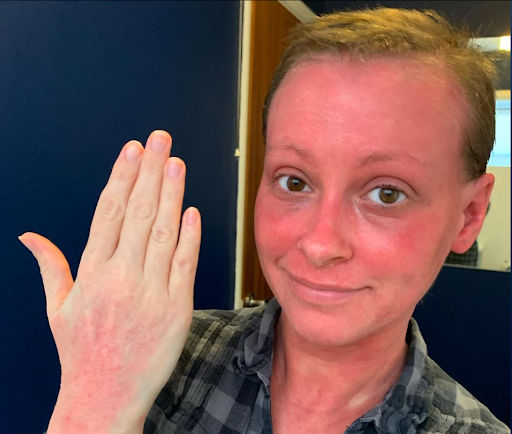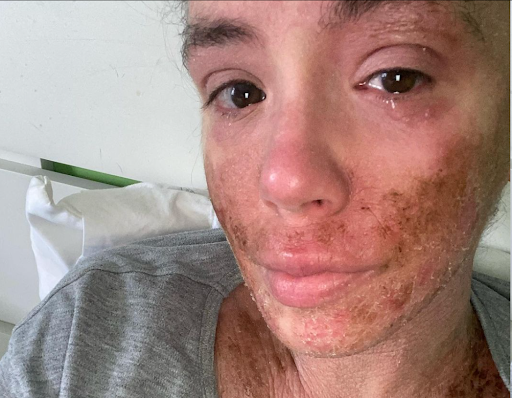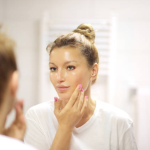Rosacea, a complex skin condition characterized by facial redness and often accompanied by pimples, can be irritating and challenging to manage. A particular type known as steroid-induced rosacea emerges as a side effect of topical steroid use and leaves many wondering: will it go away on its own? While some cases may improve after discontinuing the steroid, the situation isn’t so clear-cut, and understanding the nuances of this condition is critical for proper management and recovery. This article delves into what steroid-induced rosacea is, its duration, and the strategies available for treatment and management.
Understanding Steroid-Induced Rosacea
Steroid-induced rosacea is an adverse reaction to the prolonged application of topical corticosteroids. Unlike traditional rosacea, this condition often arises suddenly and can aggressively worsen with the continued use of steroids. Symptoms are similar to those of classic rosacea: redness, visible blood vessels, and acne-like eruptions, primarily in the area where the steroid was applied. It’s crucial to distinguish between the two types, as their treatment methods can differ significantly.
The Duration of Steroid-Induced Rosacea
The length of time steroid-induced rosacea lingers varies greatly among individuals. The duration can depend on factors such as the potency of the steroid used, the duration of use, and the individual’s skin type. Symptoms typically begin to show a few days to weeks after initiating steroid therapy. Unfortunately, without intervention, these symptoms can persist for an indefinite period, highlighting the importance of professional guidance for those affected.
Can Steroid-Induced Rosacea Resolve on Its Own?
It’s a complex question with no one-size-fits-all answer. Some individuals may see their skin return to normal after stopping the use of topical steroids, but for others, medical intervention becomes necessary. The skin’s ability to heal itself is remarkable, and in minor cases, giving it time to recalibrate without the influence of steroids may be sufficient. Nevertheless, if symptoms persist or worsen, it’s paramount to consult a dermatologist.
Treatment and Management Strategies
Dealing with steroid-induced rosacea involves a multi-faceted approach including both medical treatments and lifestyle adjustments. The key first step is the cessation of the topical steroid, which must be done cautiously to avoid further complications. Thereafter, treatment can be customized to the severity and specifics of each case.
- Gradual weaning off topical steroids to prevent flare-ups.
- Utilizing anti-inflammatory and anti-rosacea medications.
- Adopting a gentle skincare routine that avoids further irritation.
- Implementing stress-reduction techniques since stress can exacerbate rosacea.
The Role of Medical Intervention in Steroid-Induced Rosacea
Despite the natural healing capabilities of the skin, medical intervention is frequently necessary to manage steroid-induced rosacea. Dermatologists can provide prescriptions and guidance for navigating this condition. Medical treatments can range from oral antibiotics to topical therapies that target the inflammation and redness associated with rosacea. It’s important to note that each treatment plan is tailored to the individual’s symptoms and skin type.
The Long-Term Outlook for Steroid-Induced Rosacea
Most individuals with steroid-induced rosacea can look forward to a positive prognosis when they receive appropriate treatment. The prevention of future flare-ups may involve lifestyle changes and ongoing skin care management. To maintain long-term skin health, patients may need to consistently follow a gentle skincare regimen and avoid known triggers.

Preventive Measures and Tips
Key strategies not only help treat but also prevent the recurrence of steroid-induced rosacea. Here are examples of preventive measures:
- Limited use of topical steroids.
- Consultation before starting any new steroid regimen.
| Do’s of Skincare | Don’ts of Skincare |
|---|---|
| Use gentle cleansers | Use hot water for washing |
| Apply mineral-based sunscreen | Use skincare products with alcohol |
| Moisturize regularly | Overuse topical steroids |
Conclusion
In conclusion, while steroid-induced rosacea can occasionally resolve on its own, relying on self-resolution is risky as symptoms may persist or worsen. Proper diagnosis, treatment, and management strategies are fundamentally important for restoring skin health and preventing further complications. For those struggling with this condition, it’s a reminder to use topical steroids judiciously and always under the guidance of a healthcare professional.
FAQs: Understanding And Treating Steroid-Induced Rosacea
- 1. What are common signs that you might be developing steroid-induced rosacea?
- The common signs include increased redness, visible blood vessels, pimples, pustules, and possibly thickened skin where the steroid was applied, accompanied by a burning sensation.
- 2. How long should I wait to see if my steroid-induced rosacea will go away on its own?
- While some cases improve within a few weeks of stopping steroids, it’s crucial to seek a dermatologist’s advice for tailored guidance and treatment.
- 3. Are there specific skincare products I should avoid if I have steroid-induced rosacea?
- Skincare products containing alcohol, fragrances, and other potential irritants should be avoided to prevent exacerbating symptoms.
- 4. Is it possible to prevent steroid-induced rosacea?
- Limited and cautious use of topical steroids and seeking medical advice prior to their use can help reduce the risk of developing steroid-induced rosacea.
- 5. Can changes in diet affect steroid-induced rosacea?
- Certain foods and beverages known to trigger rosacea symptoms should be avoided, though diet changes alone won’t directly address steroid-induced rosacea.



